The thermite welding process is a process that uses an exothermic reacting composition to develop a high temperature and fuse material together.
There are several uses of thermite welding applications, and they all benefit from its ability to weld thick metal in adverse conditions. This process doesn’t require electricity or any sophisticated equipment. The whole setup is rather basic but powerful.
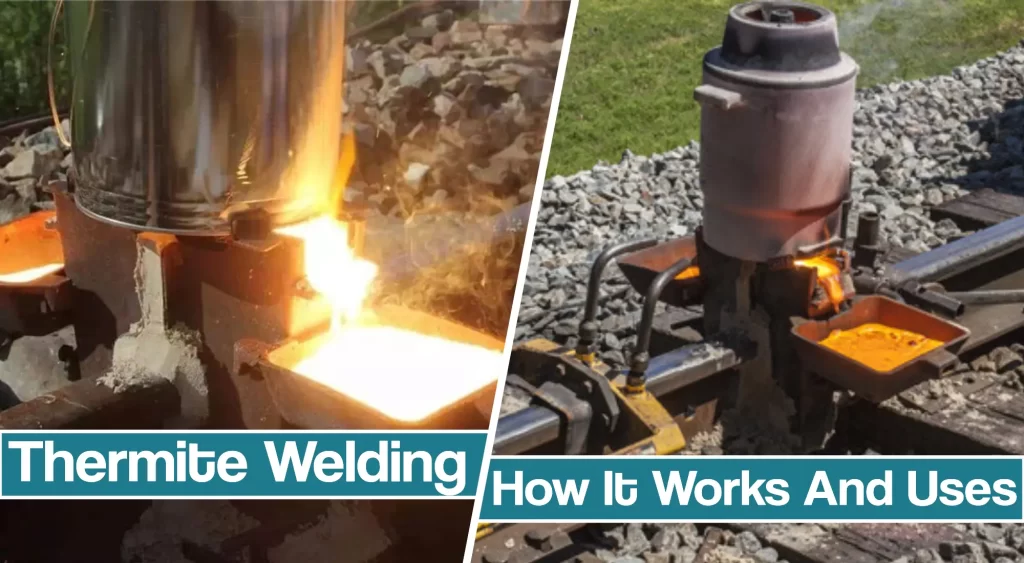
In this article, you’ll learn what thermite welding is, how it works, the applications, the dangers associated with it, and its pros and cons.
The Essence Of Thermite Welding Process
Thermite welding relies on aluminum metal’s strong affinity for oxides. The aluminum oxide naturally forms if pure aluminum is exposed to air. The aluminum atoms attract the O2 (oxygen) and form an aluminum oxide on its surface.
However, for thermite welding purposes, a mix of pure aluminum dust and oxidized iron is used. The iron oxide releases its oxides, and aluminum receives them.
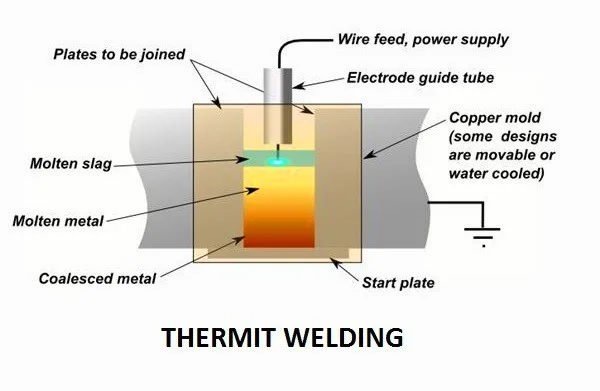
This process releases enormous heat, which achieves thermit welding. The thermite compound consists of finely ground aluminum and iron oxide in a ratio of 1:3 by weight. Many alloys can be added to improve weld metal quality and achieve desired metal properties.
This mixture is typically produced in a metal canister called a crucible. The mixture is not explosive. However, it can only be ignited at a temperature higher than 2800°F (1537°C). So, a special igniting rod is used that is shoved deep into the mixture. Mere seconds after the mixture is ignited, the chemical reaction occurs, increasing the temperatures to 4500°F (2482°C).
The heat-generating chemical reaction results in a pure molten iron or alloy iron and an aluminum slag. The slag floats on the relatively pure iron surface and is expelled, as we’ll discuss soon. The molten iron fuses with the previously heated base metal and acts as filler metal, joining parts together.
The thermite welding process is relatively clean and doesn’t pose a hazard if everything is done correctly. However, this process can quickly go sideways and result in severe injury or death. We’ll discuss safety later in the article.
Thermite Welding Applications
The thermite welding process is primarily used to weld steel rails when laying railroad rails. However, there are other applications, which we’ll cover too. But, since welding rails is its most significant use case, we’ll focus on the details of it.
Thermite Welding Railroad Rails
No other welding process can join rail steel as efficiently as the thermite welding process. That’s why it’s the most applied method worldwide to join long rails into a continuous track.
This welding process is portable, and there is no arc welding involved, diminishing the need for electrical power on-site.
Thermite welding is cheap and achieves excellent flash butt welding joints. The welding procedure specification (“WPS”) explains everything in detail. Welding rail ends together requires absolute precision.
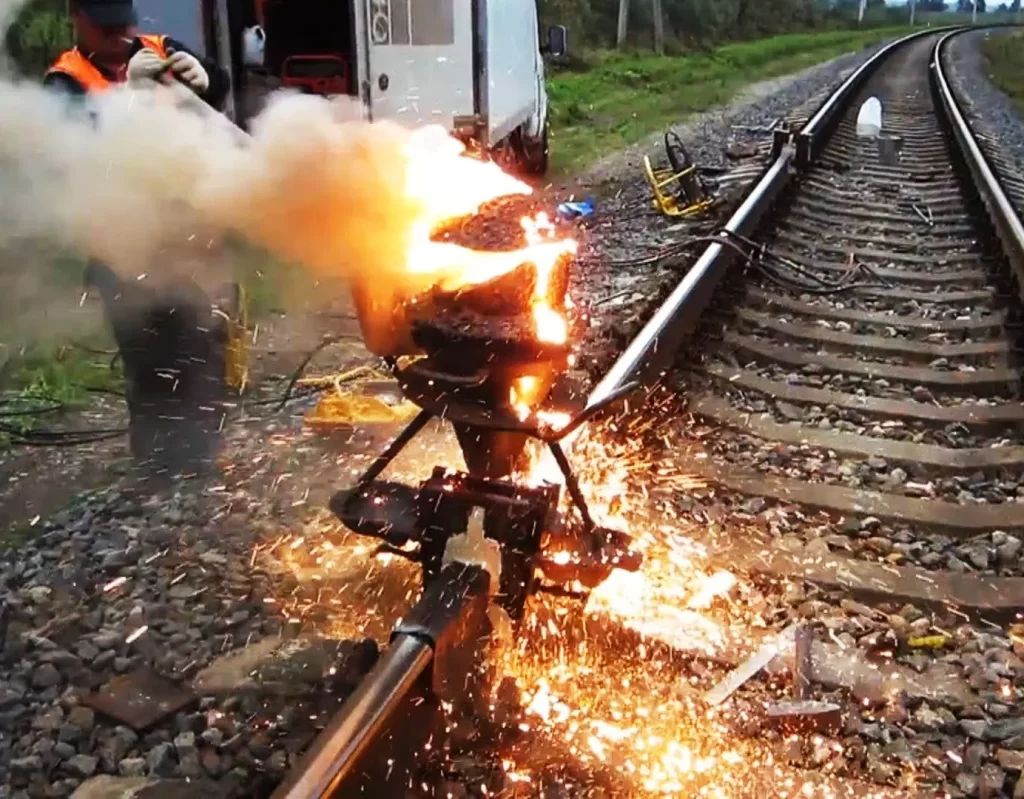
So, chemical reaction time, charge size, joint spacing, preheat temperature, and other essential welding variables are determined for the specific railroad alloy.
The Welding Procedure
Before welding, the rail ends must be perfectly cleaned from rust, oil, grease, paint, dirt, sand, or any other contaminants. Additionally, any production flaws like chips, burrs, or damaged edges need to be corrected.
Next, the faces of the rail ends must be adequately aligned and secured to prevent any movement during the welding process. Specialized rail clamps are used to provide the necessary horizontal and vertical joint spacing.
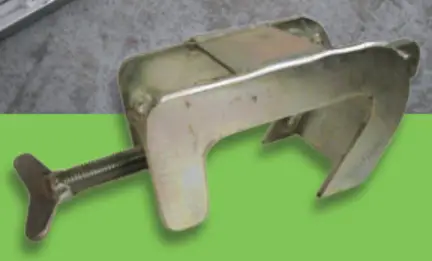
The thermite welding process requires a special casting to be formed around the two rail ends.
The casting consists of a crucible we previously discussed, a mold, and slag pans.
These parts are made from refractory materials (no deformation under heat).
The mold encapsulates both rail ends, and is sealed to prevent molten metal from leaking while the molten steel cools down.
Two slag pans are installed at the top of the mold and under the crucible. These collect the molten aluminum that leaks out at the top of the mold.

Once everything is assembled and before the crucible is placed on top and ignited, it is necessary to preheat the railroad rails.
The mold has a special design to accommodate the oxy-fuel torch from above and for the flame to leave the mold so that it doesn’t get extinguished.
It is necessary to preheat the railroad ends because the nearly pure molten iron coming from the crucible would chill instantly upon coming into contact with the cold railroad rails and wouldn’t achieve a liquid iron joining metals.
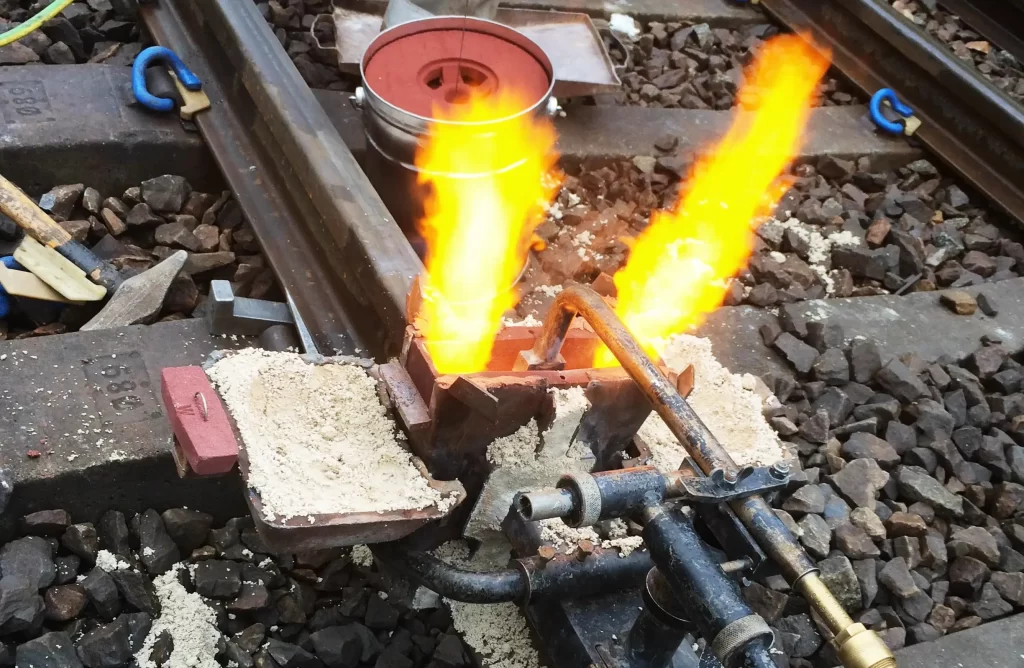
Next, the crucible is placed on top and ignited. The chemical reacting composition provides liquid iron alloy content that spurs from above into the mold. The ends of the rails undergo an exothermic welding process into a welded joint. The floating slag of aluminum and the excess metal flows out and is collected by the slag pans.
After, the mold is removed, and any excess metal from the thermite reaction is broken off using a hammer while the metal is still hot. The entire process is completed in a couple of minutes, but it is necessary to perform an additional post-weld cleanup using specialized grinding machines.
Welding Rebar For Reinforced Concrete
Thermite welding is sometimes used to weld together ends of long steel rebar for concrete reinforcement. The process is more or less the same as with the railway tracks. However, rebar is easier to weld with other welding processes, so it makes sense to use thermite welding only if the steel section is too thick, the electricity is not available, or if time is of the essence.
Thermite Welding Use In Military
A very unique use of thermite welding is found in military operations. Sometimes, the thermit process is used to sabotage moving parts of enemy military equipment that were captured or need to be left behind on the battlefield.
Thermite Welding Safety
Achieving a thermit weld is relatively safe even if such high temperatures are involved. However, there are multiple critical safety hazards to pay attention to.
The most dangerous hazard is moisture.
Any kind of water inclusion in the molten metal and ignited thermite mix can result in violent liquid steel expulsion all over the work area and the operators. This can lead to severe injuries and death.
So, thermite welding can’t be performed outdoors if it’s raining. But, you should also avoid using the thermite welding process if the surrounding area is damp or experiences increased humidity.
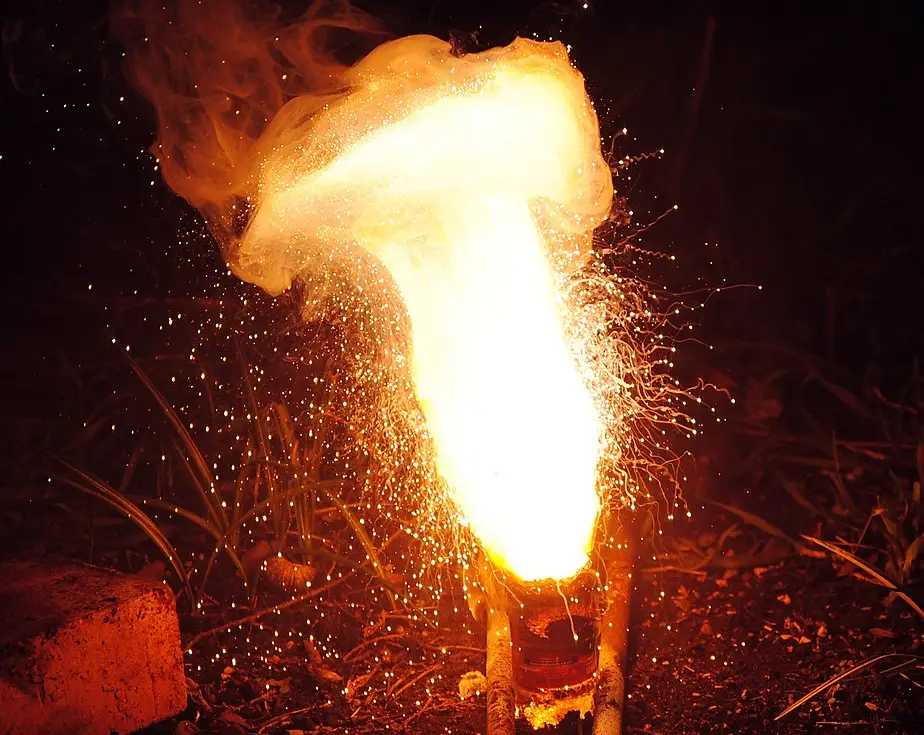
It’s better to be safe than sorry. Even if the mold is just slightly wet, it can cause a severe reaction and send the white-hot mass of metal flying around.
Another significant factor is the mold condition. You should never use a broken or incomplete mold. If mold fails, the molten iron and ignited thermite mix will fall on the surrounding area. Due to the quantity of molten metal, it can cause the water content from the soil to vaporize and react violently with the molten metal. The thermite mixture and hot metal can fly several feet after getting in contact with the water vapor.
If you are not a trained professional, it’s probably best to avoid using thermite welding altogether. But if you want to do it anyways, please read everything about safety first, starting with the linked safety guide in the resources at the bottom of the article. Additionally, make sure you are well versed in metal fabrication safety measures and that you wear all of the necessary welding safety equipment.
Conclusion
The thermite welding process’s most significant advantage is that it doesn’t require an external heat source or electricity. But its biggest con is the necessary safety measures to implement. Untrained welders should not perform thermite welding. On the other hand, a beginner can use arc welding processes with a much lower chance of injury because everything is more controlled.
Resources:
- Welding: Principles and Applications, By Larry Jeffus
- Thermite Welding Guidelines For Safe Operations By Thermit Welding (GB)





